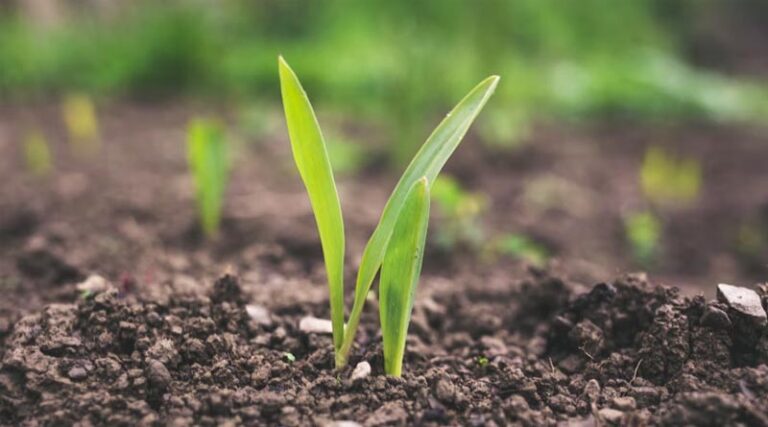
Healthy Soils, Healthy Future: Why Soil Microbiome Management is the Key to Resilient Farming
Guest Author: Harsh Vardhan Bhagchandka, President, IPL Biologicals
27 August 2025, New Delhi: Soil represents a dynamic universe of life, transcending the simplistic notion of mere “dirt.” It is a living entity brimming with a variety of organisms that create a complex ecosystem. This biological activity is what renders soil indispensable. Within every handful of soil exists the soil microbiome, a sophisticated community comprising billions of bacteria, fungi, protozoa, and larger organisms such as earthworms and insects. These organisms act as the architects of soil health, continuously breaking down organic matter, recycling nutrients, and creating a porous structure that promotes the flow of water and air. A vibrant, living soil is essential for supporting terrestrial life. It plays a major role in supporting plant growth, cleaning water, and controlling the climate by holding carbon. In India, where farming is key to both the land and the money flow, having a solid soil microbiome is key for any real sustainable farm work and environmental plans.
This biological reservoir holds theoretical potential of unprecedented magnitude; however, its current trajectory indicates a pattern of systemic and accelerating decline. The post-colonial Green Revolution, whilst delivering dramatic and welcome increases in crop production, imposed a mechanised, monoculture paradigm that systematically elevated chemical fertiliser and pesticide use to a central, unexamined role. These practices, including intensive ploughing, monocropping, and the application of agrochemicals, have severely depleted the soil’s natural microbiome, destroying the vital symbiotic relationships between plants and microorganisms. By mechanistically displacing the soil’s indigenous microbial and faunal populations, this regime has spun a deleterious feedback loop of toxicity, nutrient depletion, and structural loss. Reciprocally, about one-third of the country’s total land surface is now afflicted by one degree of degradation or another, with water-mediated soil loss emerging as the predominant erosive pathway.
India’s soil nutrient status is deteriorating at an alarming pace. A 2019–20 survey disclosed that 55% of soils exhibit nitrogen deficiency, while phosphorus and organic carbon shortages affect 42% and 44% of the surveyed area, respectively. Compounding this, the prevailing NPK application ratio is severely misaligned at 7.7:3.1:1, compared to the scientific benchmark of 4:2:1, promoting nutrient lock-up and soil depletion. This imbalance leads to a decline in soil health, negatively impacting agricultural productivity and crop yields. Furthermore, the deterioration of the microbial status of the soil hinders nutrient recycling, making it more challenging for plants to access essential nutrients. The crisis in soil fertility is closely connected to worsening food and nutrition security, showing high rates of micronutrient deficiencies and an increase in the stunting rate among children under five.
A Climate Solution Rooted in the Soil
The condition of the soils is an apt description of India’s agricultural crisis, yet within climate policy at the national level, it offers one of the most optimistic tools that remain vastly unopened. Fresh numbers from a study conducted by the Indian Council of Agricultural Research (ICAR) make their way to underscore urgent needs for better positioning in the matrix relating soil health to agriculture and climate policies in India. The study shares state-level snapshots on returns that emanate from cover cropping and reduced tillage—a set of practices already yielding much encouragement toward increasing crop yields and hence increasing incomes for farmers. For instance, ICAR found that farmers practising those two methods are earning 15-20 per cent more yields, about enough motivation when land degradation is known to work against productivity for a vast population of smallholder farmers. In addition to improving yields, the study also indicated that healthier soils demand less irrigation and fewer synthetic fertilisers, which not only saves farmers money but also minimises their environmental impact.
The statistics are supported by broader data on India’s soil crisis, as it has 45% inorganic components, 5% organic components, 25% air, and 25% water on an average basis. The average content of soil organic carbon (SOC) in numerous intensively cultivated regions has drastically decreased. This deterioration impacts nearly 98 million hectares of land in India, leading to an annual crop loss. These statistics underscore the dual challenge of agricultural decline alongside a substantial economic burden.
The Banni grasslands located in Gujarat present a compelling, data-supported model for a new climate strategy aimed at tackling this crisis. A recent investigation of the region revealed that the grassland ecosystem sequesters a remarkable 27.69 million tonnes of carbon within its soil. Furthermore, this research indicated that restored plots, referred to as ‘vaadas’, exhibited the highest density of soil organic carbon at 142.72 tonnes of carbon per hectare. These results illustrate that investing in soil health is not merely an agricultural imperative but also one of India’s most potent and underutilised strategies for climate mitigation.
A Path to Regeneration
Improving the microbial health of the soils in India counts as a major effort towards building a sustainable and successful soil health system. This should be undertaken with a comprehensive systems approach, not left to happen through disjointed programmes.
Regenerative agriculture is basically a biological management practice. This plan encourages the use of bio-fertilisers. Bio-fertilisers are those living microorganisms that not only help in nitrogen fixation but also make other minerals available, which are locked deep inside the soil, reducing dependence on chemical fertilisers and reducing costs as well.
The successful implementation of Conservation Agriculture (CA) practices—such as reduced tillage, diverse crop rotations, and consistent use of cover crops—minimises runoff, boosts soil carbon levels, and enhances water management. Supportive policies and enabling technologies should reinforce this agroecological transition. Current mechanisms, notably the Soil Health Card (SHC) and the Paramparagat Krishi Vikas Yojana (PKVY), ought to create synergistic reporting and incentive linkages with biofertiliser deployment. In addition, precise monitoring and variable-rate deployment technologies, along with the emergent carbon-farming framework that credits producers for realising increases in soil organic carbon stocks, afford a compelling new value proposition that aligns ecological stewardship with demonstrable, immediate profit margins for farmers.
Leveraging Microbial-Based Solutions
A durable strategy for reversing soil degradation rests upon exploiting microbial-based interventions that align with ecosystem functioning. Diverse bio-fertilisers harness active microbial populations that autonomously fix nitrogen from the atmosphere, mineralise nutrients, and deliver them in plant-accessible forms. For example, the genus Rhizobium enters root nodules of legumes, converting gaseous nitrogen into ammonium, thereby curtailing reliance on synthetic ammonium-containing fertilisers. In parallel, Phosphate Solubilising Bacteria (PSB), accompanied by Potassium-Mobilising microbes (KMB), remobilise struvite and interlayer potassium, while specialised Zinc Solubilising Bio-fertilisers (ZSB) render zinc from surficial and subsurface complexes into plant-uptake form.
In addition to facilitating macro- and micronutrient supply, a robust and functional soil microbiome operates as a comprehensive crop immunobiome against pathogenic threats. By inhabiting the same ecological niches as soil-borne pathogens, beneficial populations mitigate their harmful potential via competitive exclusion, resource deprivation, and the synthesis of inhibitory metabolites such as bacteriocins, chitinases, and rhamnolipids. These inherent biocontrol abilities reduce the need for synthetic fungicides and pesticides, while also promoting crop vigour and preserving agro-ecological integrity.
The Way Forward
India’s escalating soil dilemma, rooted in years of unsustainable farming methods, presents a serious risk to our food supply, economy, and global climate objectives. However, a robust remedy lies within the soil itself: its intricate microbiome. Enhancing the soil microbiome is vital for sustainable agriculture, offering a practical avenue to rejuvenate our farming base. This approach is gaining momentum, with government initiatives and policies actively fostering innovation in microbial solutions. These policies provide essential backing for the research, development, and scaling of microbial technologies. The government’s dedication includes outreach programmes that advocate these biological solutions to farmers. This unified strategy is crucial for tackling multiple challenges simultaneously. By bolstering soil health, we can significantly boost carbon capture to tackle the climate crisis, ensure food and nutrition security with more nutritious crops, and produce food devoid of residues for a healthier populace. This all-encompassing strategy, centered on soil health, is vital for securing a sustainable and equitable future for India.
Also Read: Possible Decline in Wheat Production in India, Says Agriculture Minister
📢 If You’re in Agriculture, Make Sure the Right People Hear Your Story.
From product launches to strategic announcements, Global Agriculture offers unmatched visibility across international agri-business markets. Connect with us at pr@global-agriculture.com to explore editorial and advertising opportunities that reach the right audience, worldwide.






